The home lighting device must be based on calculations and taking into account the recommendations of designers. Compliance with these conditions is the key to preserving health, comfortable conditions for users and the aesthetic attractiveness of the interior. Before proceeding with design and installation, it is necessary to explore the information set out in the article.
Content
- Criteria for selecting lamps for residential premises
- How to use an online calculator to calculate illumination
- Where and how to install lamps: General recommendations
- Recommendations for the selection of LED lamps
- Classification of lamps by lighting types
- Main Design Solutions Lamps: Material Form and Style
Criteria for selecting lamps for residential premises
The selection of lamps is based on the assessment of the following criteria.
Selection of lamps: color rendering
- Daylight: Lighting devices running in this spectrum are needed for rooms in which there are no windows. This is especially important for work offices and small utility rooms.
- Warm light: The best solution for the presence for recreation (bedrooms, living rooms, children's rooms). Luminaires radiating warm light can be both main sources and optional.
- Cold light: sources of artificial radiation operating in the spectrum of cold light are not intended for residential premises. Such lighting is used in public buildings.
Important: For residential premises, it is recommended to use light sources with color reproduction within 90-100 RA. Such lighting does not harm eyesight and does not tire.
Selection of lamps: Power
In order to calculate the power of the lamp for the room, it is necessary to determine the area. According to reference data, one square meter of premises should have about 15-20 W. Accordingly, the total capacity of all lighting devices is equal to the product of this number to the area.
A simplified method of calculating the required power of lamps for typical apartments allows you to determine the following results:
- for the corridor - 200 W (it is recommended to divide into two sources);
- for toilet - 70-80 W;
- for bathroom - 100 W;
- for the kitchen - 100 W excluding additional sources above the working surface;
- for residential room - 150 W.
These power standards can be applied to lamps equipped with incandescent lamps. Due to the fact that more economical light sources (including LED) are increasingly used, their choice is based on the calculations associated with the illumination of the surface (measured in suites (LC)).
Calculation of lighting luminaires: how to calculate the right amount of LED lamps
The calculation consists of two stages:
- calculating the total value of the light flux for a particular room;
- determination of the desired number of lamps (as well as their power) to ensure the calculated value of the light flux.
The first stage of calculating the lamps
The luminous stream required for the room is determined by the product of the illumination rate (x) to the area (y) and on the height coefficient (Z), that is, x * y * z.
The coefficient Z is taken equal to 1 with the height of the ceilings in the range of 2.5-2.7 m. For ceilings, a height of 3 - 3.5 Z will be 1.2. For ceilings, 3.5-4 M height coefficient will be 2.
Pay attention to the table in which the illumination of the premises is indicated in accordance with the requirements of SNiP.
The second stage of calculating the lamps
Knowing the value of the light stream can calculate the required amount of LED lamps and their power. The table located below is compared with the power and values \u200b\u200bof the light flux of LED lamps.
We divide the magnitude of the light flux determined by the calculations in the first stage, on the light flux of the lamp (in lumens). In the end, we learn how much lamps need for normal room lighting.
An example of calculating the lamps
Calculate the power and number of LED lamps in the office for a room of 50 m² with a ceiling with a height of 3.2 m.
500 (x) * 50 (y) * 1,2 (z) \u003d 30000 lumens
Table 2 choose the light source for the office. If you purchase a 16 W with a light bulb with a light flux of 1300 lumens, we define that it will take 30000/1300 \u003d 23.08 light bulbs for the equipment of the room. The results of the calculations must be rounded to the large: this means that the office should use 24 light bulbs by a capacity of 16 W.
For uniform distribution of lighting throughout the area, it is necessary to replace 24 light bulbs of 16 W per 48 light bulbs on 8 W and arrange them so that the light falls into the most remote corners.
Inaccuracies and errors when calculating lighting can be related to the color solving of the floor, the ceiling and walls of the room. Reflection coefficient for various surfaces:
- black color - 0%;
- dark background (brown, purple, dark green) - 10%;
- gray - 30%;
- light colors (yellow, orange) - 50%;
- white - 70%.
Tip: In order for the lighting level to be sufficient to create a normal working environment, the number of lamps corresponding to SNiP standards should be increased at least 1.5 times. To spend electricity, lamps should be divided into groups, each of which is controlled by its switch.
How to use an online calculator to calculate illumination
In order to determine the required number of room lamps, you can use one of the online calculators offered by the Internet.
The task is to fill the special windows with the necessary data - the characteristics of the room and the illuminated surfaces. Pre-measure:
- the width of the room;
- the length of the room;
- ceiling height;
- the level of the surface for which it is important to know the level of illumination (workbench, desktop, drawing board);
- reflection coefficient of the working surface;
- the height of the suspension of the lamp.
You can also need information about the color of the walls and the ceiling, the floor color and the parameters of the lamp. The program will perform calculations and give out the result - the required level of illumination.
Important: It should be borne in mind that the program "Online Calculator" performs calculations and issues a result that meets the requirements of the Russian standard regulating the lighting norm (SNiP 23-05-2010) or European (EN12464-1).
Your attention - video (important recommendations).
Where and how to install lamps: General recommendations
When the lighting system is in the house, you need to use the recommendations on how to choose a lamp for the lamp correctly. LED, halogen and fluorescent lamps must be installed so that not only the necessary level of illumination is ensured, but also organically fit into the interior, emphasized its merits.
- For lighting rooms with dark furniture, lamps with lamps of the oblong shape, located horizontally, are used.
- If the room is furnished with light tones, choose lighting devices with lamps, from which the light is directed down.
- For premises a large area with a high ceiling, lamps with lower reflector are used.
- If you need to realize the visual zoning of the room, lamps are installed with reflectors, with the possibility of adjusting height.
- For the bedroom, a successful solution is to use a lamp with a large ceiling. Such lamps visually reduce the ceiling height, which makes the room more comfortable. The overall illumination in the bedroom can be reduced under the condition of the room equipment with additional point light sources.
- The LED tape around the perimeter of the window creates an unusual aesthetic effect.
- For the children's room, the lighting should be sufficient to read books and games safe. At the same time, bright light can irritate the eyes. In order for the children's room to be comfortable, lamps with matte plates should be used.
- Halogen light sources are used to illuminate the working area of \u200b\u200bthe kitchen. General lighting is provided with the help of a central ceiling lamp with the possibility of adjusting height.
- To illuminate the corridor, you can install a plane in the value. If the corridor has an oblong shape, light sources can be several.
- For the bathroom and toilet, the best solution is the lamp in the waterproof case. Near the mirrors should be additional lamps.
Recommendations for the selection of LED lamps
Energy-efficient technologies contributed to the popularity of LED lamps. Choosing them for the lighting of the house, it is necessary to take into account their main characteristics.
- View of the diffuser: distinguish transparent and matte. The latter create multiple light, but their intensity decreases (used for local lighting). Lamps with transparent diffusers are installed in large rooms.
- Color temperature: indicated by a numerical expression. What it is higher, the brighter will be the glow of such a lamp. For example, light with the brightness of sunlight into a cloudless day has a temperature of 6500 K. The color temperature can also be symbols W, WW and CW (white, warm and cold-white, respectively).
- The value of the light stream: the characteristic depending on the power consumption, performance and the number of LEDs.
- Type of base: must match the design of the cartridge. Depending on the type marked with E27 symbols (the most common type), E14 (minion), GU10 (connector with swivel fastening by means of a two-pin compound), GU5 / 3 (used for reflex lamps) - two-stroke connector; G13 - for ceiling luminaires.
Classification of lamps by lighting types
Depending on the design of lamps and functional purposes, the lighting can be divided into the following types.
- General: It is necessary for frequently visited premises, where there are many people.
- Local (zonal): It is used for specialized small rooms (bathrooms, toilets, pantry). Local light is necessary for work offices, workshops. Light lighting include wall lamps (s).
- Floors: a variety of lamps of local lighting. A characteristic feature is the presence of a high rack on which the plane is installed. Floors are connected not to the lighting network, but to the outlet. They can be transferred from place to place.
Main Design Solutions Lamps: Material Form and Style
For the lighting device in residential, industrial, public spaces, various types of lamps can be used in working offices and offices.
Suspended lamps, including chandeliers
The lighting devices of this type should be harmoniously combined with the interior, so they are chosen in size size. It is customary to use chandeliers:
- to illuminate hallways;
- for big halls;
- for children's rooms;
- for dining and kitchens.
Important: Chandeliers cannot be used in low ceilings (except billiards, where they are located above the tables and do not create interference).
Lamps with crystal suspensions
Such lamps are appropriate in large halls with the interior in the classic style. Crystal suspensions reflect light in different directions, which creates the effect of the presence of the sun.
For registration of interiors in high-tech and neoclassicism styles, lamps with a crystal, equipped with a remote control function and a change in the color gamut, can be used. The disadvantage of crystal suspension is the complexity of maintaining them in pure form: any dust becomes very noticeable on the glass.
LED devices
Lighting devices with LED sources may differ with reduced ceiling. This qualitatively changes the design of the lamps, and is also used for the dot lighting device. With their help, it is advantageous to emphasize the elements of the decor.
LED ribbons are installed along the perimeter of the room - along the ceiling plinth or by the floor. In this way, you can visually enlarge the room.
Halogen lamps
With their help, a uniform dispersion of light is achieved, they are used to illuminate any zone. Rays from light sources can be sent to any point of the room, changing the angle of inclination within 8 - 60 degrees.
Halogen lamps are well suited for low ceilings, to illuminate steps, they can be installed on the walls and furniture.
In conclusion, an example of how the calculation of the lamps is performed (video with specialist comments).

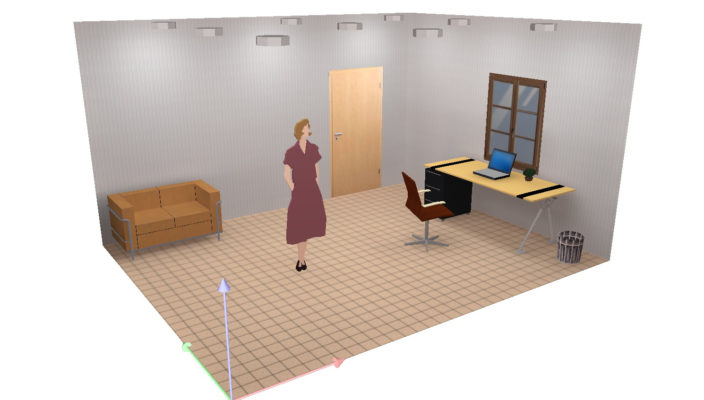


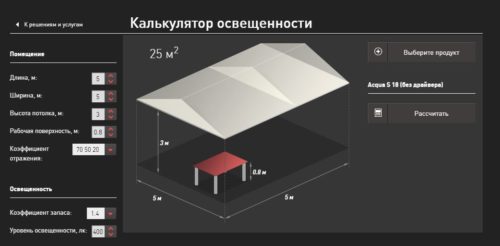
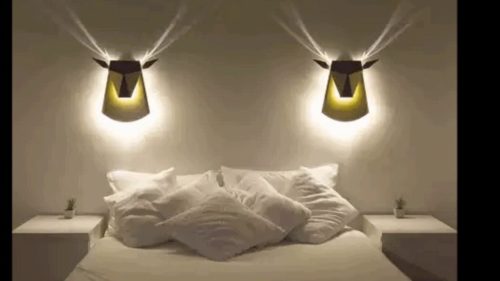
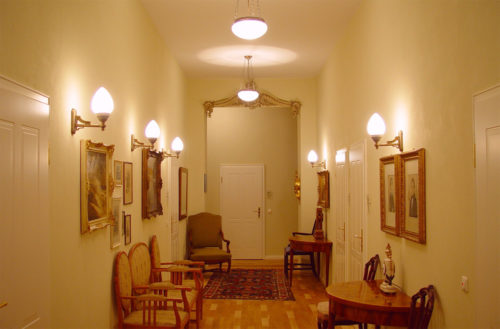
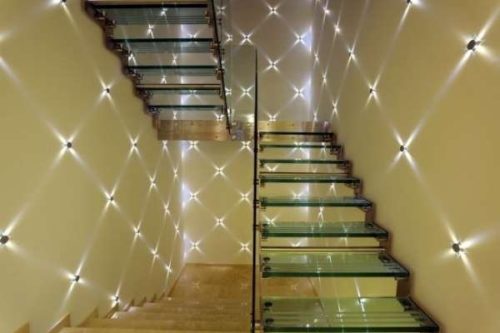
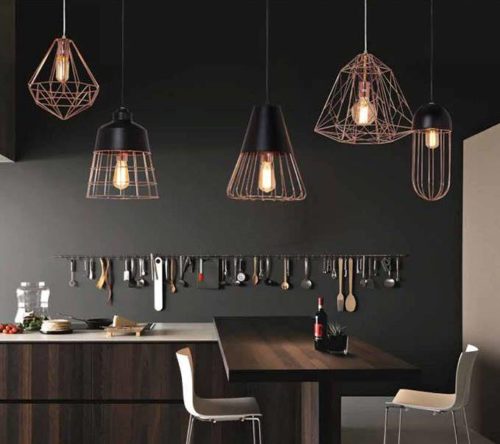
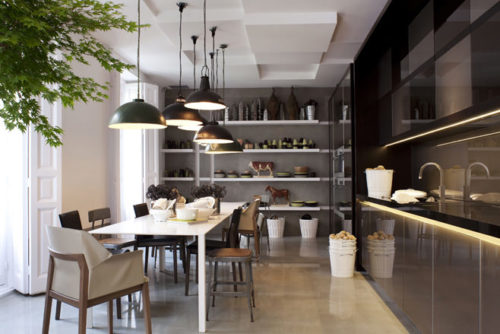
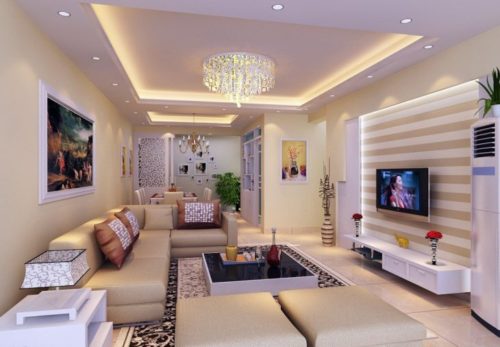
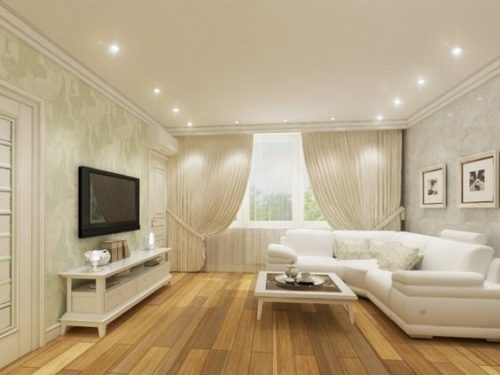
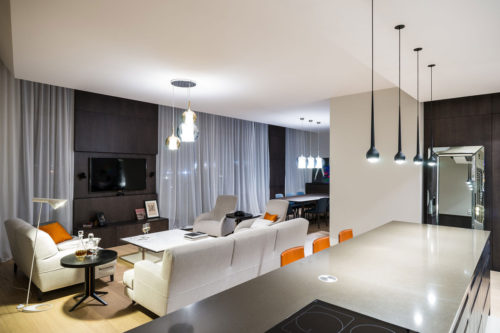


















The best lighting on the plot and the autopolivation system, which I met, makes dacocci.rf: https: //xn--80ahqp0afz7a3a.xn--p1ai/inzhenernye-sistemy-ograzhdeniya/ustrojstvo-avtomaticheskogo-poliva/ - All recommended, definitely the best!
Here look at the advice https://zen.yandex.ru/media/id/5BFFB186A9F85912C7983402/PRavilnoe-osvescenie-pridomovoi-Territory-5C7B7E9E595E2100AFFC2225